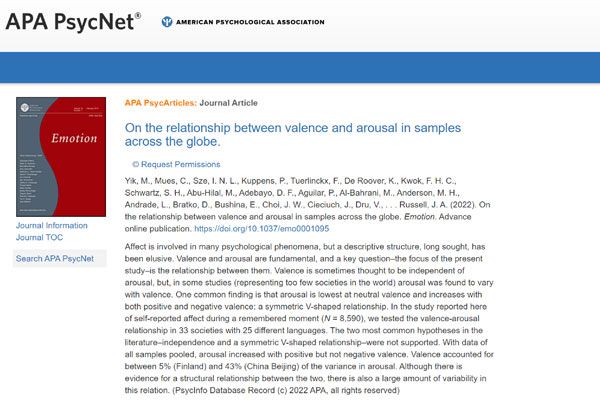Notifications list
On the relationship between valence and arousal in samples across the globe
Published: 17.06.2022.

Michelle Yik, Chiel Mues, Irene N. L. Sze, …, Iris Marušić et. al are the co-authors of the paper On the relationship between valence and arousal in samples across the globe, published in “Emotion“, indexed in WoSCC in Q1 for Experimental Psychology (2021) and in Scopus in Q1 for Medicine - miscellaneous and Psychology - miscellaneous (2022).
Affect is involved in many psychological phenomena, but a descriptive structure, long sought, has been elusive. Valence and arousal are fundamental, and a key question - the focus of the present study - is the relationship between them. Valence is sometimes thought to be independent of arousal, but, in some studies (representing too few societies in the world) arousal was found to vary with valence. One common finding is that arousal is lowest at neutral valence and increases with both positive and negative valence: a symmetric V-shaped relationship. In the study reported here of self-reported affect during a remembered moment (N = 8,590), we tested the valence-arousal relationship in 33 societies with 25 different languages. The two most common hypotheses in the literature - independence and a symmetric V-shaped relationship - were not supported. With data of all samples pooled, arousal increased with positive but not negative valence. Valence accounted for between 5 % (Finland) and 43 % (China, Beijing) of the variance in arousal. Although there is evidence for a structural relationship between the two, there is also a large amount of variability in this relation.
More information and a full list of contributing authors is available at the link.
